Clancy Tucker's Blog, page 179
August 9, 2017
10 August 2017 - THE HARLEM HOARDERS
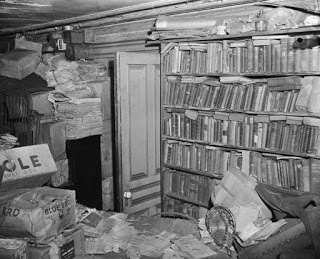
THE HARLEM HOARDERS
G'day folks,
Now, here is an interesting story about hoarders.
N ew York City fire fighters still use the term “a Collyer’s mansion situation” as code for a hoarder’s house fire. It usually means it’s not safe for them to enter the building. In 1947, it took police five hours to plough through the junk and find the first Collyer brother’s body.
It took them three weeks to find the second brother just 10 feet away, buried under a collapsed junk tunnel inside the four-storey brownstone. History’s worst hoarders, the tragic but fascinating tale of the Collyer brothers can speak to anyone with a penchant for collecting or thrifting. How did two promising members of society end up sealing themselves off from the outside world, fiercely reclusive and entombed by over 140 tons of collected items? Could there a Collyer brother somewhere inside all of us?
Homer and Langley Collyer were both educated at Columbia University. Homer had a degree in law and Langley studied engineering and also became an accomplished concert pianist who performed at Carnegie Hall. Their childhood and family life was normal enough. Mom was former opera singer, a descendent of an old New York family who were one of the first to emigrate to America on the Mayflower. Dad was a doctor, a wealthy gynecologist, who you might say had had a reputation for being a little eccentric– Dr. Herman Collyer was often seen paddling down the East River in a canoe on his way to work at the hospital on Blackwell’s Island, and then carrying the canoe back to his home in Harlem.
It might also be worth mentioning Mr. and Mrs. Collyer were first cousins, who eventually separated when their sons were in the 30s. Homer and Langley, who had never married or lived on their own, chose to remain at the family’s Harlem brownstone with their mother. When their parents died, all possessions were left to the brothers.
In 1933, Homer went blind due to hemorrhages in the back of his eyes. His younger brother quit his job as a piano dealer to care for him full-time, which is when their withdrawal from society began. Langley began keeping years’ worth of newspapers so his brother could read them once his sight had been restored. “I am saving newspapers for Homer, so that when he regains his sight he can catch up on the news,” he once told reporters.
In the midst of the Great Depression, the brothers became increasingly fearful of their own neighbourhood, which was shifting from the upper-class area they had known as children to an area synonymous with poverty and crime.
When rumours began circulating amongst the neighbours of the reclusive and eccentric Collyer brothers, people became curious, local kids threw rocks at the windows, doing no favours for occupants’ increasing paranoia. Langley boarded up the windows, removed the doorbell and wired the doors shut, which in turn fuelled even more rumours. Several people attempted to burgle the home after hearing speculation that the home contained the brother’s hidden fortune, which prompted Langley, a former student of engineering, to construct booby traps and elaborate tunnel systems made of junk all around the house.
The house was a maze of hoarded items piled high to the ceiling. A list of notable finds recorded in the house after their deaths includes 25000 books, human organs in picked jars from their father’s medical practice, 14 pianos, two organs, countless decades old newspapers, baby carriages, a collection of guns, bowling balls, the folding top of a horse-drawn carriage, dressmaking dummies, pin-up posters from the early 1900s and 8 live cats.
Langley ventured out only after midnight for food runs. He would collect countless unwanted and abandoned items on the street that caught his eye along the way.
When Homer became paralysed due to inflammatory rheumatism, the brothers refused to seek professional medical treatment. Although their father was a doctor, they distrusted doctors. They later told reporters who had become interested in the eccentric local story, “We have a medical library of 15,000 books in the house. We decided we would not call in any doctors. You see, we knew too much about medicine.”
Langley believed his brother’s sight could be restored with a diet high in vitamin C so he fed Homer 100 oranges a week. He adapted a Model T Ford to generate electricity after their power was cut off, along with their water and gas in 1928 due to unpaid bills. The telephone lines were disconnected in 1917. They said they didn’t mind because they had no one to talk to.
When the bank came to evict them in 1942 for failing to pay their mortgage for three years, police found Langley in a clearing he had made in the walls of junk. Without a word, he wrote a check for the equivalent of nearly $100,000 today to pay off the mortgage in one single payment and promptly ordered everyone off the property.
The next time authorities returned, it would be to search for the bodies of the Collyers. An anonymous tipster had called the police, convinced there was a dead body in the house. To enter the sealed brownstone, an officer broke a window on the second floor and climbed through.
Unable to get past the solid walls of junk, a squad of men began making their way through the debris by throwing out everything blocking their way onto the street. The spectacle drew a crowd of thousands as the entire neighbourhood came to watch the mysterious Collyer townhouse being emptied of its contents.
After several hours, they found Homer’s body. Medical examiners later determined he had died of starvation and heart disease. They continued searching for his younger brother unsuccessfully. It was suspected that Langley had been the anonymous caller and had fled the family home, possibly on the run following the death of his brother. A massive manhunt was launched, with the authorities searching nine different states in a bid to find the missing brother.
Three weeks later, knee-deep in the ongoing clean-up effort of the house, a workman found the decomposing body of Langley just ten feet away from where his brother had died. He was buried in one of his two-foot wide tunnels lined with rusty bed springs and a chest of drawers. He had died of asphyxiation after he accidentally tripped one of the booby traps and was crushed by debris. Police believe he was crawling through the tunnel to bring food to his brother.
The house was deemed an unsafe fire hazard and was razed later that month in 1947. Some of the items of interest found in their home ended up as exhibits at dime museums, featured alongside sideshow performers and curiosities. The rest was sold at auction.
The cumulative estate of the Collyer brothers was valued at the modern equivalent of $1,117,623. Fifty-six people made claims for the estate. One woman even tried to claim to be their long lost sister. In 1952, county court ruled that twenty-three of the claimants were to split the estate equally.
Since the 1960s, the site of the former Collyer house has been a pocket park, named for the brothers.
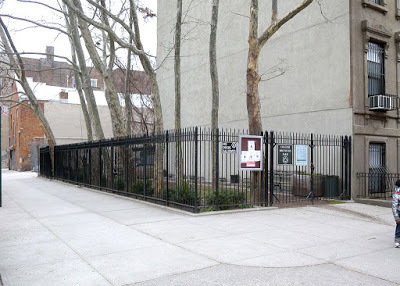
Now, check out these photographs.

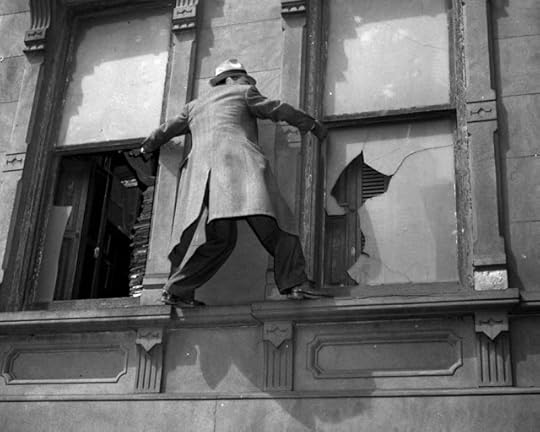




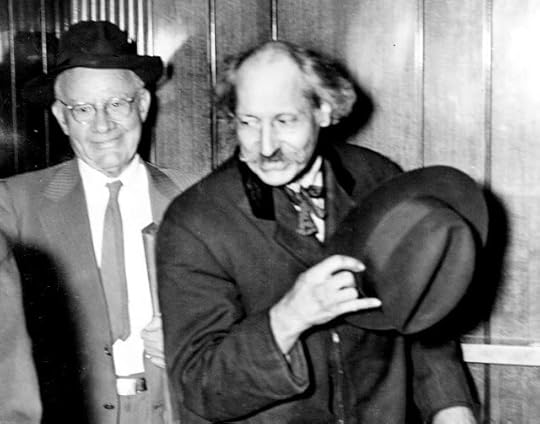


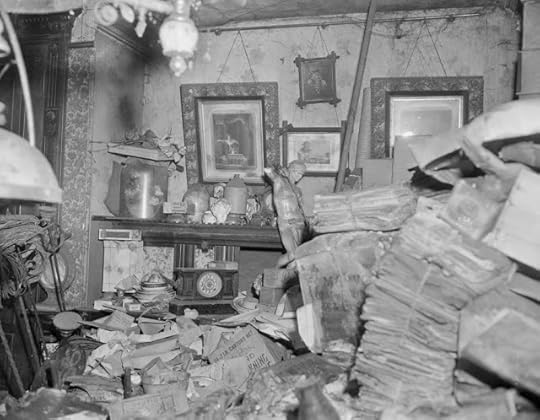


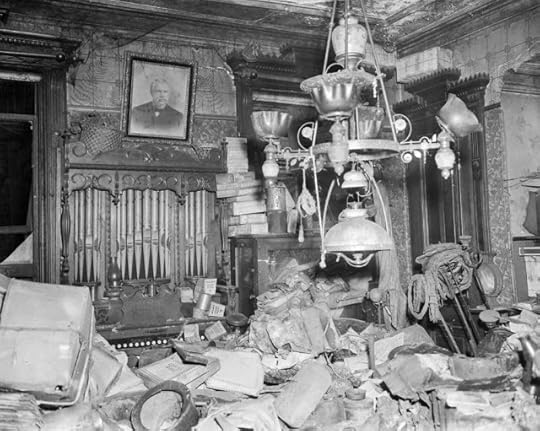
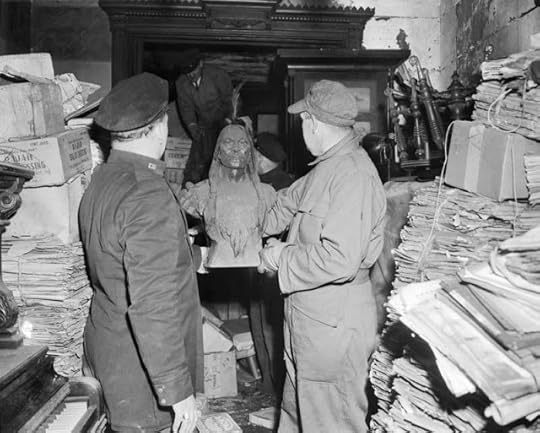

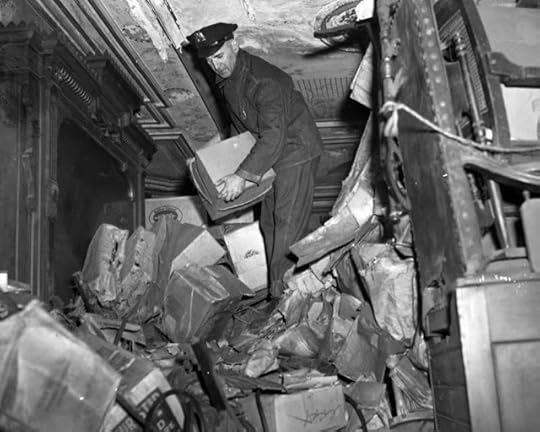
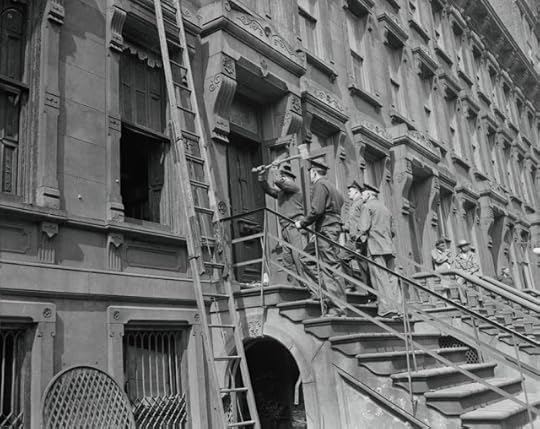


Clancy's comment: I have met some hoarders. Gob smacking, eh?
I'm ...
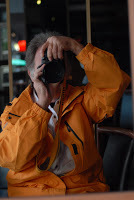

Published on August 09, 2017 16:06
August 8, 2017
9 August 2017 - TOP QUOTES
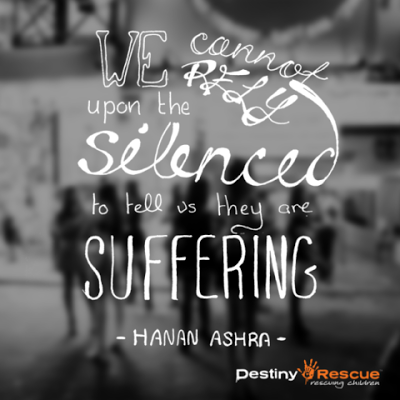
TOP QUOTES
G'day folks,
Time to check out some wise words.
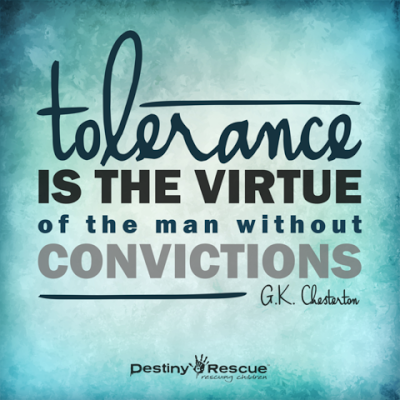

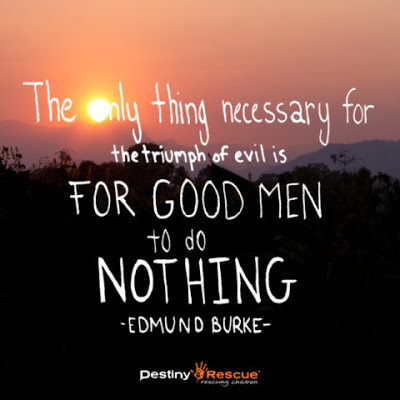

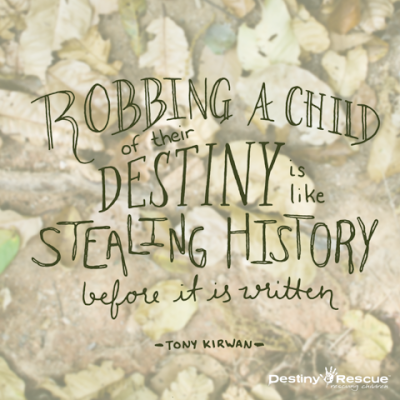


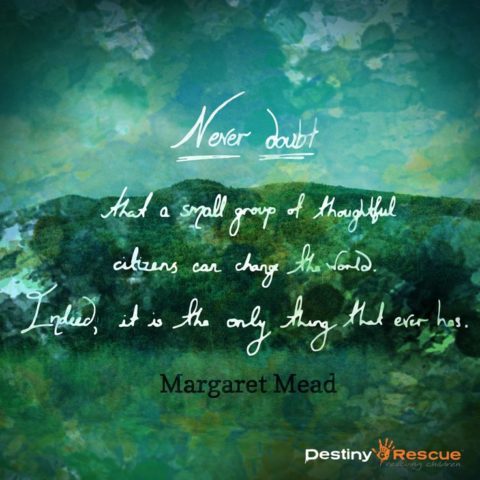


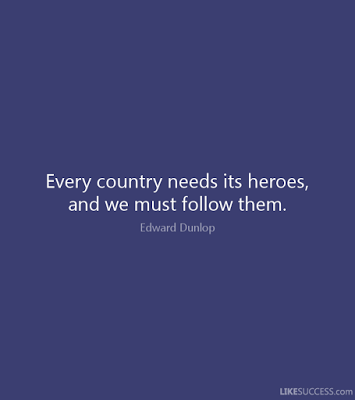
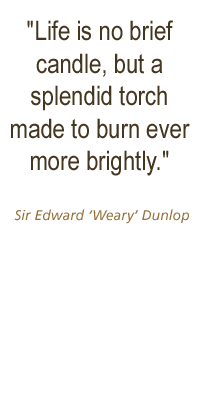
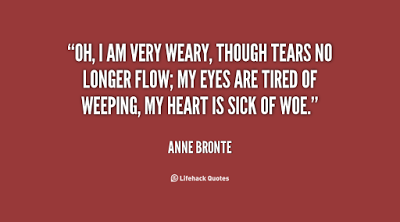
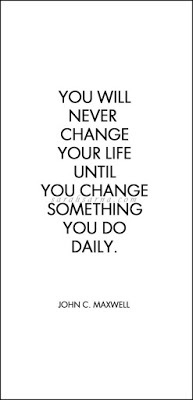
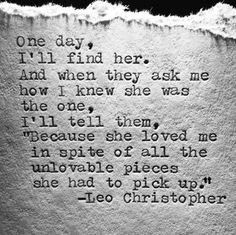

Clancy's comment: Mm ... Right, now get to work. You've had your inspiring fix for the day.
I'm ...
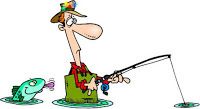
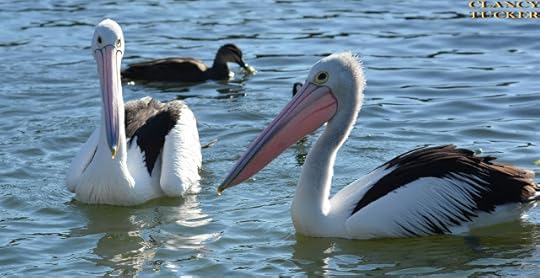
Published on August 08, 2017 14:34
August 7, 2017
8 August 2017 - RICK KARLSRUHER - Guest Author
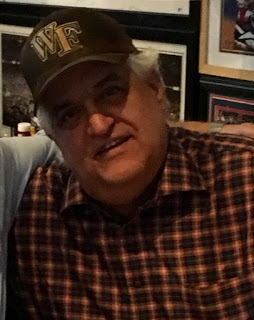
RICK KARLSRUHER- Guest Author-
G'day folks,
I'm pleased to introduce a real character.
Welcome, Rick ...
1. TELL US A LITTLE ABOUT YOURSELF AND YOUR WRITING JOURNEY.
The journey for Standoffstarted over thirty years ago when I wrote it as a script. Comedy legends Dick Martin (Laugh-In) and Matty Simmons (Founder of National Lampoon, Producer of films like Animal House, Vacation and many others) thought it was really funny, but the studios said it was too far ahead of its time.
With new Cold War coming, I decided to make it into a book. We need some laughs these days.
2. WHAT DO YOU ENJOY MOST ABOUT BEING A WRITER?
I love the excitement of finding and bringing a story to life. I’m not a grinder. I don’t do formulas. If I don’t love the idea, I don’t write it, but when I do I might with 2-4 hours of sleep every night for a couple weeks to get it going.
3. WHAT IS THE HARDEST THING ABOUT BEING A WRITER?
These days getting books sold is the hardest part. There are so many writers and so many are giving away their work. Pushing, shoving, begging Clancy for a little space to introduce myself to you is tough.
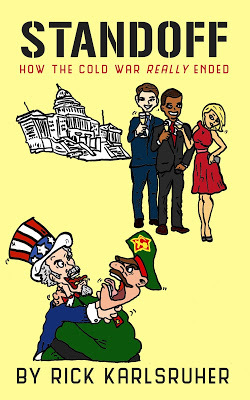
4. WHAT WERE YOU IN A PAST LIFE, BEFORE YOU BECAME A WRITER?
I’ve done promotions, managed a couple of bands, settled down to international marketing and management, but I really want to make Standoff a success. I’d love to have your help.
5. WHAT IS YOUR GREATEST WRITING ACHIEVEMENT?
Each of my books created an achievement for me. My first was difficult to write as it was about two horrible years of my life that changed the rest of my life. Reliving it as I wrote was daunting. Even after finishing it, I’m not sure how much it was cathartic. Turning my current project, Standoff, How the Cold War Really Ended, from a script to a book was really difficult. I had to add an entire story line to make it long enough. Knowing that expert had liked it was hugely encouraging and frightening at the same time. I had to make it good.
6. WHAT ARE YOU WORKING ON AT THE MOMENT?
I am working on getting the word out on my new book, Standoff, How the Cold War Really Ended. I could use everyone’s help who is reading this. As we descend into a new Cold War, we need to know how the last one really ended. It’s funny, maybe insightful. We can’t be serious all the time.
7. WHAT GENRE DO YOU WRITE?
I write what I feel like writing. My style is conversational. I want to put you into the story.
8. DO YOU HAVE ANY TIPS FOR NEW WRITERS?
Write what you love. Don’t chase trends. It rarely works.
9. WHAT IS YOUR GREATEST JOY IN WRITING?
Knowing I have created something that others enjoy. We need more fun in the world.
10. WHAT’S THE GREATEST COMPLIMENT YOU EVER RECEIVED FROM A READER?
The two I think about are when Dick Martin told me he loved Standoff. I mean this is the guy who got Nixon to come on his show and got Nixon to make fun of himself. My other one was hilarious to me. I participate in a forum from my university and have a rather wild persona there. Upon reading my first book, someone said, “You know I hate you, but damn you can tell a story.” I still smile when I think about that.
11. WHAT WAS THE WORST COMMENT FROM A READER?
I don’t remember. Nor should anyone else. There will be people who don’t like you, are jealous of you or wished they could do what you are doing. They will attack you. There are billions of other people in the world. Forget about the “haters”.
12. WRITERS ARE SOMETIMES INFLUENCED BY THINGS THAT HAPPEN IN THEIR OWN LIVES. ARE YOU?
Well, my first book, A Story Almost Told, is entirely about what happened in my life. Standoff shows that politicians are silly and that the little guys can win. I was influenced by the Cold War to come up with a “real” idea of how it ended. Hey, my way makes as much sense as what we have been told were the reasons…and it’s a lot more fun. J
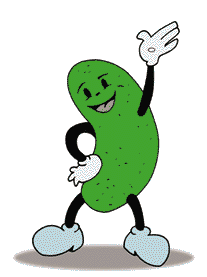
13. OTHER THAN WRITING, WHAT ELSE DO YOU LOVE?
I love going to movies, music and sports.
14. DID YOU HAVE YOUR BOOK / BOOKS PROFESSIONALLY EDITED BEFORE PUBLICATION?
Yes, I did! You must! The biggest reason is that the writer knows what your manuscript is supposed to say, but you may not have typed it that way. You need to do this!
15. WHAT WAS YOUR FAVOURITE MANUSCRIPT TO WRITE? WHY?
Standoff was much more fun, because it is a semi-detective story that turns into a farce. Or is it real? Maybe I’m showing you why vodka has become so expensive. Do you really think Gorbachev and Reagan woke up one morning and decided to call the Cold War a tie? If not, maybe Standoff is closer to the “truth” than I think.
16. WOULD YOU LIKE TO HAVE YOUR BOOKS MADE INTO MOVIES? EVER WRITTEN A SCREENPLAY?
Standoff originally was a script and I hope your readers buy enough copies to get a studio involved. Hint! JI think if Standoff succeeds it will be natural to make A Story Almost Told will be made into a movie.
17. HOW MUCH THOUGHT GOES INTO DESIGNING A BOOK COVER?
I came up with ideas for both of my covers, but had pros put them together. With a gazillion books out there, your cover is incredibly important to draw readers. Be different!
18. ARE YOUR BOOKS SELF-PUBLISHED?
Yes, but I am dialing Standoff back a bit after the summer.
19. ANYTHING YOU’D LIKE TO ADD?
First of all, I’d like to thank my good mate Clancy for helping me promote Standoff. If enough of you buy enough copies my book, I promise to fly to Australia to buy him a few pints.
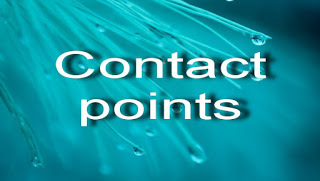
‘STANDOFF’
ON
SMASHWORDS
Think James Bond meets Inspector Clousseau while on your way to meet Dr, Strangelove while wagging the dog.
By the way, since I’m here to pimp my book, I guess I can tell you it is among the Top 10 net reviewed books out of 450,000 titles on the site, the #1 net best reviewed book published in 2017.
Hey, if I’m not going brag about myself, who will?
For all the writers out there, congratulations! Don’t stop!
Thanks Clancy!

Clancy's comment: Welcome, Rick. Good luck with the book. I hope hundreds will buy your book so you can buy me a few pints.
I'm ...


Published on August 07, 2017 14:47
August 6, 2017
7 August 2017 - WEARY DUNLOP - AUSTRALIAN LEGEND
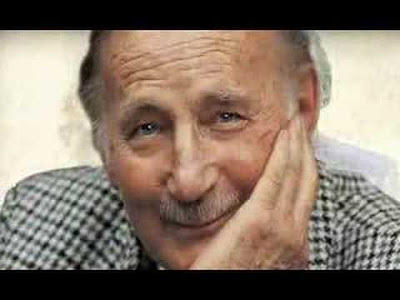
WEARY DUNLOP- AUSTRALIAN LEGEND -
G'day folks,
Perhaps Australia's most well-known veteran of the Second World War, Edward Dunlop, became well-known for his medical work with Australian prisoners of the Japanese, and his subsequent welfare work on their behalf after the war.
He was born on 12 July 1907 at Major's Plain, Victoria. In 1924 he became an apprentice pharmacist before moving to Melbourne three years later to study at the Pharmacy College.
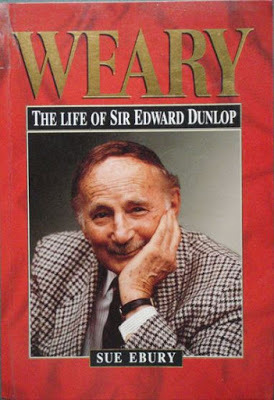
In 1930 he was awarded a scholarship to Ormond College at Melbourne University to study medicine. There he picked up the nickname, 'Weary', that remained with him for the rest of his life. In 1934 he graduated with first class honours, having also represented Australia in rugby union in 1932.
Having been in part-time army service until beginning his studies, Dunlop rejoined the military in 1935 as a captain in the Australian Army Medical Corps and also began work at Melbourne Hospital. In 1937 he graduated from Melbourne University as a Master of Surgery before attending St. Bartholomew's Medical School in England where he was admitted to the Royal College of Surgeons in 1938.
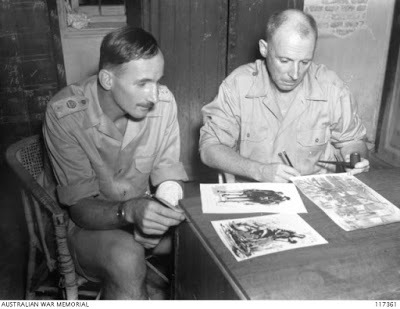
In November 1939 Dunlop enlisted in the AIF for service overseas. By May 1940 he had been promoted to major, having served in Jerusalem and was appointed Deputy Assistant Director of Medical Services on the staff of the Australian Corps Headquarters and AIF Headquarters in Gaza and Alexandria.
Dunlop served in the Greek and Crete Campaigns with the 2/2nd Casualty Clearing Station, and was later senior surgeon in Tobruk. When the war in the Pacific began Dunlop's unit was transferred to Java. He was promoted to temporary lieutenant colonel in February 1942 and given command of No. 1 Allied General Hospital at Bandung. When the island fell to the Japanese Dunlop became a prisoner of war.

After being imprisoned on Singapore, Dunlop left for Thailand on 20 January 1943. For the rest of the war he worked as a medical officer on the Burma Thailand railway. The men under his charge suffered under primitive conditions and Dunlop became famous for his care of the ill and his willingness to place himself at risk, despite being unwell himself.
Dunlop survived captivity, had his temporary promotion confirmed, and was demobilised in February 1946 after which he transferred to the reserve with rank of honorary colonel. In November 1945 he had married Helen Ferguson, to whom he had become engaged early in the war and in 1946 established a private medical practice. Over the ensuing years Dunlop received many honours and appointments. He was made a fellow of the Royal Australasian College of Surgeons in 1948 and was appointed senior consultant at the Royal Melbourne Hospital from which he retired in 1967.
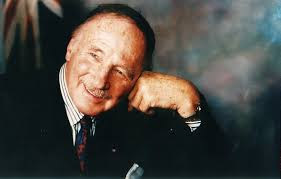
He was involved in the Colombo Plan, teaching and working in Thailand, Ceylon, India and Vietnam. At the same time he worked with former prisoners of war and led commemorative tours to the Burma-Thailand railway.
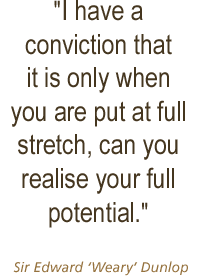
Dunlop died in Melbourne on 2 July 1993 and his funeral was attended by more than 10,000 people.

Clancy's comment: I met several people who met him after the war and they all said he was a humble man. Lest we forget! Rest in peace, Weary.
I'm ...

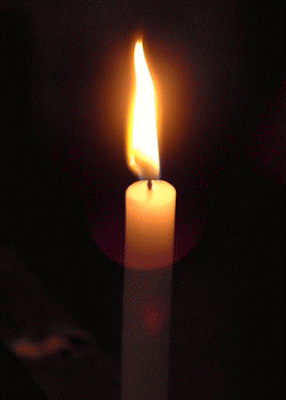
Published on August 06, 2017 15:06
August 5, 2017
6 August 2017 - PARIS SHOPKEEPERS
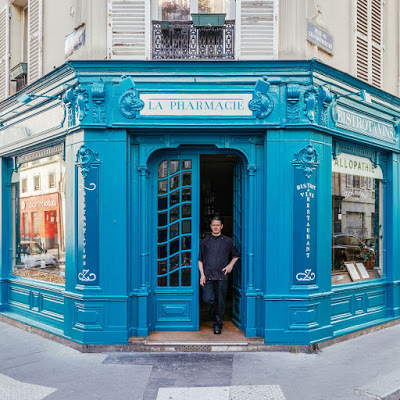
PARIS SHOPKEEPERS
G'day folks,
Welcome to the beauty of Paris. The beauty of Paris is more than its amazing museums and monuments. Ancient families of craftsman and young designers, food lovers and music addicts, even opticians and dry cleaners, display a unique savoir faire that adds creativity to everyday life. Their workshops, laboratories and boutiques tell a different tale of the city.


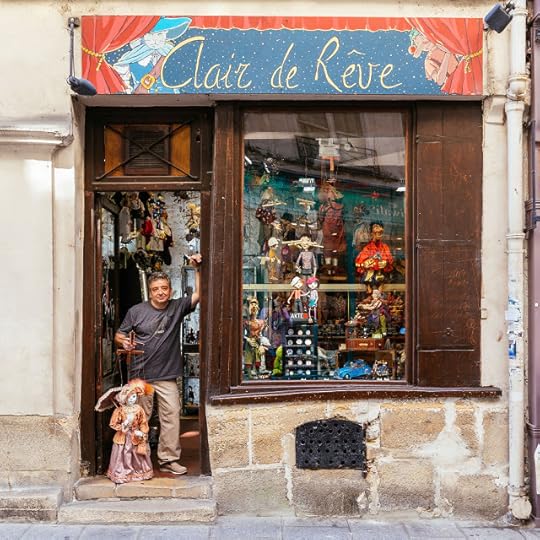

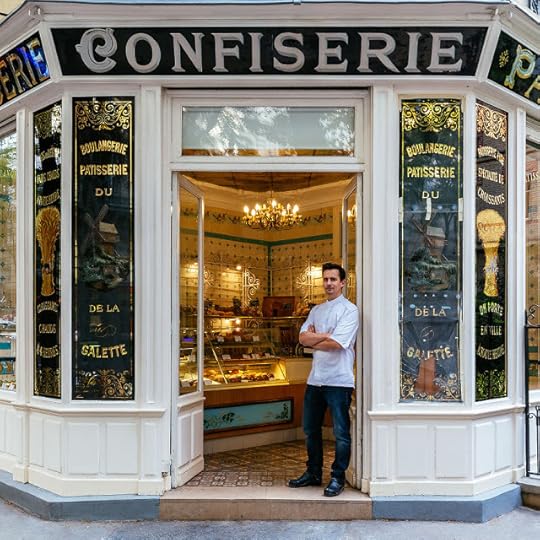

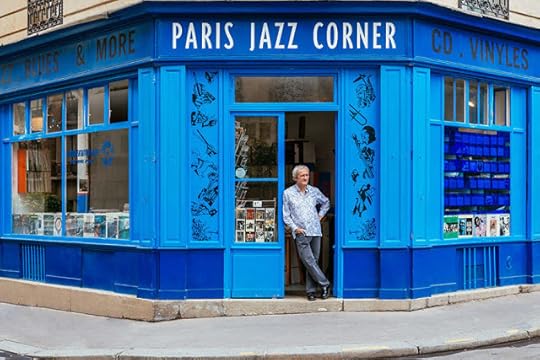
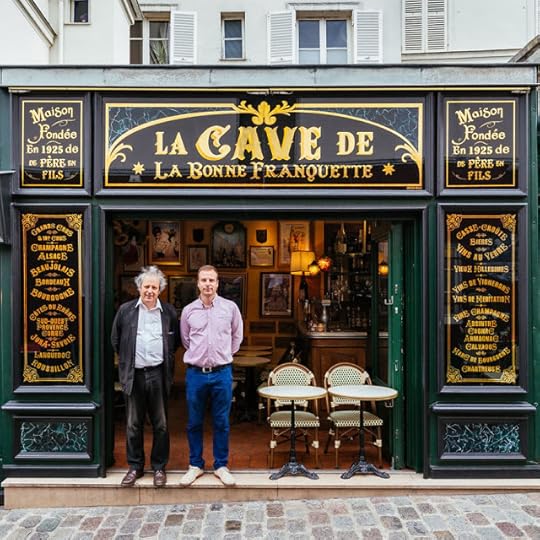
 Clancy's comment: Mm ... Very attractive and inviting, eh?
Clancy's comment: Mm ... Very attractive and inviting, eh? I'm ....

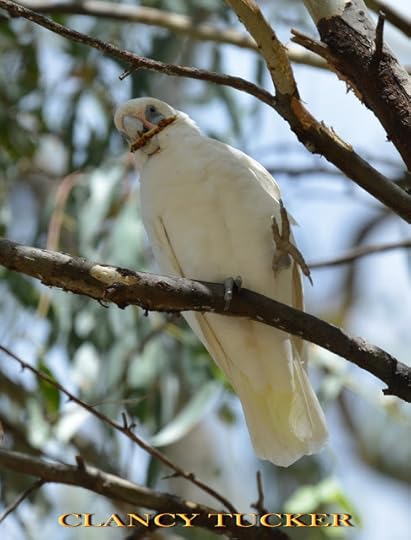
Published on August 05, 2017 15:16
August 4, 2017
5 August 2017 - KATE E. STEPHENSON - Communications Specialist
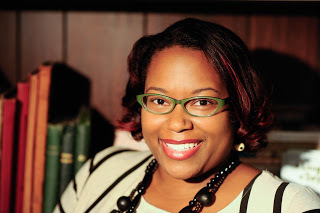
KATE E. STEPHENSON- COMMUNICATIONS SPECIALIST -
G'day folks,
It's nice to introduce someone with skills I've never posted before.
Welcome, Kate ...
1. Tell us about you and what you do.I am a communications specialist, which is a catch-all title that encompasses writing, editing and consulting work in the publishing, business, and career development fields. I am a lover of language, a creator of narratives, and a weaver of words, who likes wearing many hats. I grew up believing that anything is possible and that you can go anywhere in the world or your imagination through a book.Which is why in 2006 I founded KEMPS Consulting, a boutique communications firm, catering to dreamers and doers with something to say. Founded on the principal of personalized, one-on-one, client interaction, KEMPS resists the mass production movement, instead offering tailored solutions and custom products to meet our clients’ specific needs. At KEMPS, communication is queen and rules with a powerful message.
In partnership with my work at KEMPS, I am an active blogger, managing KEMPS Lexicon, a niche blog exploring communication in its varied forms, as well as Kate-Book.com, a lifestyle blog for, by, and about Kates, which is currently under major reconstruction and poised for a relaunch summer 2017. I’m also in the process with a business partner of developing a guide blog focused on helping people identify opportunities to take life by the horns.
I’m on a mission to write a new world, one brave and inspiring story at a time. I believe it is a holy calling, and I honor that with an honest spirit of integrity and a healthy dose of gumption. I want to support my clients in leaning into their dreams and discovering their unique voices. There is too much in the world that silences our hopes—fear, judgment, conformity—and I want to help people let those things go to speak their own personal truth.
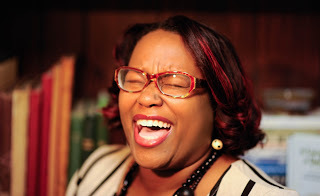
2. What do you think is the most important trait in your line of work?The ability to listen.
3. What advice do you have for starting authors?That little voice that tells you “This isn’t good enough”, “No one will like this”, “Who cares about this or you”—that nagging negative nelly in the back of your head—take it and lock it in a box, take the box to the attic, put it on the highest, hardest to reach shelf, then lock the attic door and leave it up there. That voice never does anyone any good. So just lock it away and instead listen to the much quieter and often harder to hear but more powerful voices of inspiration and intuition that whisper your truth in your ear.
4. What’s your favourite part of your job?I love working with people to develop their stories. Witnessing an idea grow into a publishable manuscript, or a career goal grow into a unique professional brand, or a business idea become a solid business plan is so satisfying.
5. What has inspired you most?My clients inspire me every day. I am in awe of their bravery and honesty to tell the stories that are in their hearts to tell. Or to speak their own personal truths in taking the audacious leap of faith in changing careers. Or to lean into their dreams by pursuing that entrepreneurial opportunity or small business opening or new project launch. It inspires me to show up.
6. What was the happiest moment of your life?I’ve had so many happy moments. I can’t talk about a happiest, but I can describe one of the most amazing moments of my life—the day I held my goddaughter for the first time. I have this habit of saying that newborns look like chicken aliens. (If you’ve ever seen a good number of newborns then you’ll know what I mean.) But the first time I saw my little preemi baby, all 2lbs 4oz of her, with her big beautiful, bright eyes and perfect ten fingers and ten toes, she was perfect. Through her pink translucent skin you could see proof of the healthy veins pumping blood through her body. And though she was tiny, she was so feisty and strong. Looking back on the pictures now, I can attest that she was indeed a little chicken alien, but she was my chicken alien and that made all the difference in the world. Remembering that moment when they put her tiny bundled self in my hands (she was too tiny for arms) and I laid her on my chest fills me with an unnameable joy and pride. She was perfect.
7. What was the saddest moment?The sister of my heart passed away February 14, 2005. Evelyn and I had been best friends, virtually attached at the hip, for almost ten years. She was the yin to my yang. Our differences only made us closer. And though we weren’t born from the same womb, we were sisters in every other sense of the word. We fought fiercely, we loved fiercely, we protected each other fiercely. My world was turned upside down the early morning that she died. Like many other people, I’ve endured through many hardships and sadnesses, but this was a crossroads moment unlike any other in my life. I have never been the same and I never will be, and that is as it should be.

8. Who or what made you laugh the most?My goddaughter. She’s 3 going on 30. She cracks me up with her smart alec comments, her brilliant observations, and her own belly laugh that never fails to be contagious.
9. What surprised you most?People never cease to amaze me. The unending depths of human fallibility juxtaposed with the infinite span of humane generosity and love.
10. What or who was your biggest challenge?Accepting that there wasn’t one thing that I wanted to be when I grew up. I never had that moment where I was certain that I wanted to be a doctor or a fire fighter or a ballerina growing up. And when I started my career I thought, okay, I’ll do this. But even that didn’t feel like what I wanted to do forever. It’s been difficult to admit that I don’t have to commit to being any onething, to having any oneprofession—that it’s okay to want variety in my life. With that realization comes a scary proposition that demands that I accept a higher level of risk in my life. We are already in the age where corporately sponsored retirements are disappearing like the Dodo bird; but there are still elements of stability that can be achieved in a more traditional professional life. Understanding that I don’t want that traditional life means saying “okay, stability, you aren’t that important to me” and making my own way every day.
11. What has been your biggest regret?Concentrating more on helping others at my own expense. I am a giver by nature. I have a habit of preferencing other people’s time and development over my own. It took me a while to realize that my time is as important and my own growth as essential as anyone else’s. I regret not learning this lesson sooner. Understanding how and when to say “No” is so crucial for both professional and personal progress.
12. What is your prime focus in life today?Seeking growth opportunities. Challenges are great teachers and so I’m chasing down challenges.
13. Do you have any fear of doing something wrong?I have a fear of doing everythingwrong. But my father taught me that fear is false evidence appearing real, and I try to remember that. Fear can be paralysing, and you can’t get much of anything done in that mode. So instead, I try to use my fear as motivation. If I fear that thing, whatever it may be, I want to know why—what is it there that I’m really hesitant about? If I can identify that, the fear tends to morph into a challenge.
14. What would be your dying comment? Why?“Live like no one is looking.” When it’s all said and done, no one really is. The main thing that holds people back is fear, mostly of judgement and of change. But the thing is that most of the people whose judgment we fear in any particular moment are folks who in the blink of an eye won’t matter nearly as much to us anymore. And, while change is scary, it happens anyway, so why not let it be something that you want, instead of something simply forced upon you. At least if you do what’s in your heart to do, you won’t have any regrets when you look back at your life. Just live like most of us dance, with our eyes closed just grooving to our own beat—and when you peak your eyes open other people are having a dancing good time right along with you, and if not, their loss.

15. What are the greatest legacies you will leave behind?Stories that communicate Truth.
16. What would you like written on your tombstone? Why?Her stories told the truth, the truth spoke power to life, her life was lived in full.
17. What would be the last sentence you ever write?“It’s never the end.”
18. What personal traits would you like to have in your next life?Patience, natural networking, and quicker wit
19. What would be your top three chosen careers in your next life?I love what I do so editor, writer, publishing consultant; but if I had to choose differently: chef, song writer (specifically), diplomat (I’ve been told I’m naturally diplomatic).
20. What’s lacking in the world today?Respect
21. Have any heroes? Why? Who?My grandmothers and aunts are my heroes. I have a lot of both, four grandmothers and innumerable aunts. They are all feisty, intelligent, A-type personalities who kick ass and take no names. I aspire to be like them. Similarly, my non-familial role models are women like Diana Ross, Beyoncé, Tina Turner, Maxine Waters, Octavia Butler, Zora Neale Hurston—women who have defied categorization, earned recognition, and used their voices in literal and figurative ways to build brave new worlds.

22. What advice would you give to parents today?Help your children find their voices. Listen to them; help them discover what they are good at, what they are passionate about. It’s not enough to have skills any more. We really need to cultivate children’s natural talents and inclinations, encouraging them to hone their innate gifts.
There is nothing more important than finding your own voice.
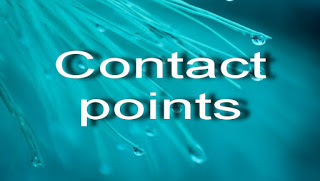
23. How can readers contact you?Email Kate | KEMPS Consulting | Twitter | Facebook | LinkedIn | Instagram | Amazon AuthorCentral | Goodreads | Google+ | Thumbtack | About.Me | (201) 793-8515

Clancy's comment: Many thanks, Kate. It's been a pleasure. Some interesting answers here. Thank you.
I'm ....
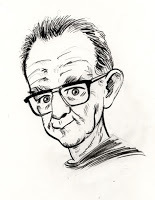

Published on August 04, 2017 15:38
August 3, 2017
4 August 2017 - AWESOME NATURE

AWESOME NATURE
G'day folks,
Welcome to some great photographs of nature, taken by clever photographers.


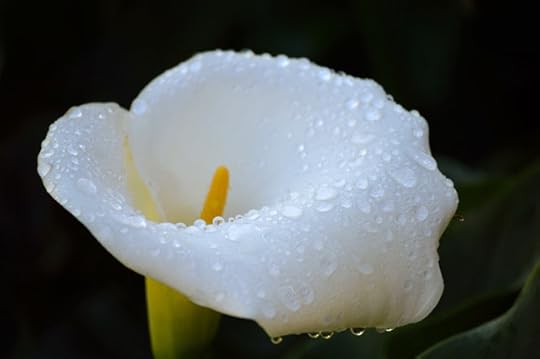
















Clancy's comment: Amazing, eh?
I'm ...

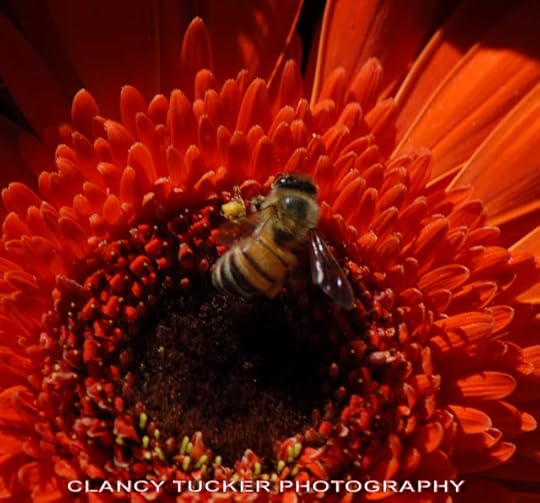
Published on August 03, 2017 15:07
August 2, 2017
3 August 2017 - Coincidences Between Abraham Lincoln and John F. Kennedy
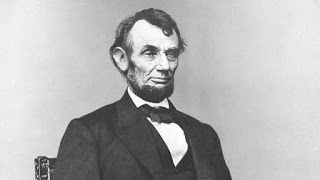
Coincidences Between Abraham Lincoln and John F. Kennedy
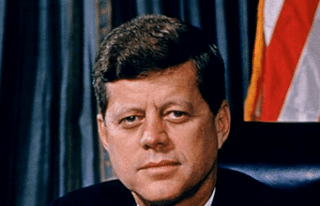
G'day folks,
You may have read about this before, but I still think it is interesting.
It will be very interesting to look at the coincidences between Abraham Lincoln and John F. Kennedy, This list first appeared in the mainstream American press in 1964, just barely a year after the assassination of John F. Kennedy and is currently in circulation today, almost 50 years later.
While some of them are true such as the year in which Lincoln and Kennedy were each elected President, we are not sure whether Kennedy had a secretary named Lincoln for instance, but what you’re going to see below will truly amaze you and I hope you’ll find it very interesting.
– Lincoln was elected to Congress in 1846
– Kennedy was elected to Congress in 1946
– Lincoln was elected president in 1860
– Kennedy was elected president in 1960
– Andrew Johnson’s name has 13 letters
– Lyndon Johnson’s name has 13 letters
– Andrew Johnson had a pug nose and slicked-back hair
– Lyndon Johnson had a pug nose and slicked-back hair
– Lincoln was sitting beside his wife when he was shot
– Kennedy was sitting beside his wife when he was shot
– Rathbone, who was with Lincoln when he was shot, was injured (by being stabbed)
– Connally, who was with Kennedy when he was shot, was injured (by being shot)
– Rathbone’s name has 8 letters
– Connally’s name has 8 letters
– Lincoln’s wife held his head in her lap after he was shot
– Kennedy’s wife held his head in her lap after he was shot
– Lincoln was shot on a Friday
– Kennedy was shot on a Friday
– Lincoln was shot in a theatre named Ford
– Kennedy was shot in a car made by Ford– Kennedy was shot in a car named Lincoln
– Lincoln’s bodyguard was away from his post at the door of the President’s box at the theatre
– Kennedy’s bodyguards were away from their posts on the running-boards of the President’s car
– Lincoln was shot in a theatre and his assassin ran to a warehouse
– JFK was shot from a warehouse and his alleged assassin ran to a theatre
– Lincoln’s assassin had a three-worded name, John Wilkes Booth
– Kennedy’s alleged assassin had a three-worded name, Lee Harvey Oswald
– John Wilkes Booth has 15 letters
– Lee Harvey Oswald has 15 letters
– John Wilkes Boothe was born in 1839 (s/b 1838)
– Lee Harvey Oswald was born in 1939
– Lincoln didn’t die immediately after being shot
– Kennedy didn’t die immediately after being shot
– Lincoln and Kennedy died in places beginning with the initials P and H
– Lincoln died in Petersen’s house
– Kennedy died in Parkland Hospital
– Booth was shot and killed in police custody before going to trial
– Oswald was shot and killed in police custody before going to trial – Kennedy had a secretary named Lincoln
– After Lincoln’s assassination the nation experienced an emotional convulsion
– After Kennedy’s assassination the nation experienced an emotional convulsion
– the whole world cried when Lincoln died
– the whole world cried when Kennedy died
– Lincoln’s funeral train travelled from Washington DC to New York
– Kennedy’s brother’s funeral train travelled from New York to Washington DC
– Lincoln Assassination conspiracy theories are believed all these years later
– Kennedy Assassination conspiracy theories are believed all these years later
– Abraham was the first name of the man who filmed Kennedy’s murder in the Lincoln
– The man running alongside Kennedy’s car snapping pictures with his 35mm camera was a salesman of Lincoln cars
– Kennedy bought a Virginia home that was the 1861 Civil War headquarters of Lincoln’s first general-in-chief, McClellan
– Jefferson Davis was the name of the President of the Confederate States while Lincoln was president of the United States
– Jefferson Davis Tippit was the name of the police officer killed allegedly by Kennedy’s alleged assassin
– Lincoln was famous for his wit and for telling hilarious stories and anecdotes
– Kennedy was famous for his wit and for telling hilarious stories and anecdotes
– Lincoln was sitting in a rocking chair at Ford’s Theater when he was shot
– Kennedy had a special rocking chair he sat in at the White House
– Henry Ford bought the rocking chair Lincoln died in and put it in his museum in Dearborn
– Kennedy’s seat in the Lincoln he was sitting in when he was shot is in Ford’s museum
– Lincoln’s seat in the Ford he was sitting in when he was shot is in Ford’s museum
– John Kennedy is the name of a character in a 1951 movie about a detective travelling by train to thwart the assassination of President Lincoln
– John Kennedy is the name of the real-life detective who travelled in the train with President Lincoln in 1860 to thwart his assassination
– In 1863, the Tsar sent the war fleet of the Russian empire to assist President Lincoln during the American civil war
– In 1962, during the Kennedy presidency, a fleet of Russian ships transporting instruments of war were steaming towards America with less benign intent
– Kennedy’s funeral was modeled on Lincoln’s funeral
– Andrew Johnson was a heavy drinker with crude behavior
– Lyndon Johnson was a heavy drinker with crude behavior
– There were conspiracy theories that Johnson was knowledgeable about Lincoln’s assassination
– There were conspiracy theories that Johnson was knowledgeable about Kennedy’s assassination
– Days before it happened Lincoln told his wife and friends about a dream he’d had of being shot by an assassin
– Hours before it happened Kennedy told his wife and friends it would be easy for an assassin to shoot him from a crowd
– Shortly after Lincoln was shot the telegraph system went down
– Shortly after Kennedy was shot the telephone system went down
– Kennedy’s father had been the Ambassador to England at the Court of St James
– Lincoln’s son became the Ambassador to England at the Court of St James
– Lincoln and Kennedy were 2 of the greatest presidents of the nation
– Lincoln’s wife tastefully and expensively re-decorated the White House
– Kennedy’s wife tastefully and expensively re-decorated the White House
– Lincoln loved great literature and could recite poetry by heart
– Kennedy loved great literature and could recite poetry by heart
– Lincoln had young children while living at the White House
– Kennedy had young children while living at the White House
– Lincoln’s sons had ponies they rode on the White House grounds
– Kennedy’s daughter had a pony she rode on the White House grounds
– Lincoln lost a child (12 year old son) to death while President
– Kennedy lost a child (newly born son) to death while President
– Lincoln had 2 sons named Robert and Edward. Edward died young and Robert lived on.
– Kennedy had 2 brothers named Robert and Edward. Robert died young and Edward lived on
– Lincoln let his children run and play in his office
– Kennedy let his children run and play in his office
– Lincoln’s name has 7 letters
– Kennedy’s name has 7 letters
– In Lincoln’s & Kennedy’s names the vowels & consonants fall in exactly the same place; in the order c, v, c, c, v, c, c
– War was thrust upon Lincoln almost immediately after inauguration
– War was thrust upon Kennedy almost immediately after inauguration
– Lincoln ordered the Treasury to print its own money
– Kennedy ordered the Treasury to print its own money
– International bankers may have arranged the assassinations of Lincoln and Kennedy
– Lincoln gave negroes freedom and legalized equality
– Kennedy enforced equality for negroes
– Lincoln delivered the Gettysburg Address on November 19, 1863
– Kennedy was assassinated on November 22, 1963
– Lincoln was loved by the common people and hated by the establishment
– Kennedy was loved by the common people and hated by the establishment
– Lincoln was succeeded, after assassination, by vice-president Johnson
– Kennedy was succeeded, after assassination, by vice-president Johnson
– Andrew Johnson was born in 1808
– Lyndon Johnson was born in 1908

Clancy's comment: I can't verify any of these facts because I wasn't there at the time. However, I do recall where I was and what I was doing when JFK died. I was playing tennis.
I'm ...
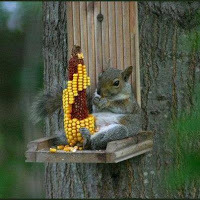

Published on August 02, 2017 14:03
August 1, 2017
2 August 2017 - FAMOUS LAST WORDS
FAMOUS LAST WORDS
G'day folks,
Welcome to some more famous last words.
13. Lady Nancy Astor
“Am I dying or is this my birthday?”
14. Edmund Gwenn – Actor
“Yes, it’s tough, but not as tough as doing comedy.”
15. Leonardo da Vinci – Artist
“I have offended God and mankind because my work didn’t reach the quality it should have.”
16. Oscar Wilde – Writer
“Either that wallpaper goes, or I do.”
17. Pancho Villa – Mexican revolutionary
“Don’t let it end like this. Tell them I said something.”
18. O. Henry (William Sidney Porter) – Writer
“Turn up the lights, I don’t want to go home in the dark.”
19. General John Sedgewick – Union Commander
“They couldn’t hit an elephant at this dist…”
20. Henry Ward Beecher – Evangelist
“Now comes the mystery!”
21. Kit Carson – Pioneer
“I just wish I had time for one more bowl of chili.”
22. Douglas Fairbanks, Sr. – Actor
“I’ve never felt better.”
23. Ludwig van Beethoven – Composer
“Friends applaud, the comedy is over.”
24. Ethel Barrymore – Actress
“Is everybody happy? I want everybody to be happy. I know I’m happy.”
25. Thomas Alva Edison – American inventor & businessman
“It is very beautiful over there.”
26. Edgar Allen Poe – Writer
“Lord help my poor soul.”
27. Theodore Roosevelt – US President
“Put out the light.”
28. George Bernard Shaw – Playwright
“Sister, you’re trying to keep me alive as an old curiosity, but I’m done, I’m finished, I’m going to die.”
29. Benjamin Franklin – Statesman
“A dying man can do nothing easy.”
30. Emily Dickinson – Poet
“I must go in, the fog is rising.”
31. John Quincy Adams – US President
“This is the last of earth, I am content.”
32. Stonewall Jackson – General
“Let us cross over the river and sit in the shade of the trees.”
33. Andrew Jackson – US President
“Oh, do not cry – be good children and we will all meet in heaven.”

Clancy's comment: What would you say?
I'm ...


Published on August 01, 2017 14:42
July 31, 2017
1 August 2017 - NICK CAVE - MUSICIAN & WRITER
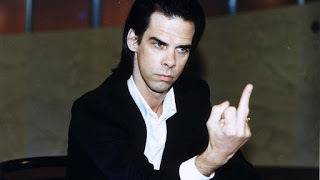
NICK CAVE- MUSICIAN & WRITER -
G'day folks,
Nick Cave is the brooding Australian singer for the bands Grinderman and Nick Cave and the Bad Seeds.
Synopsis
Born in Warracknabeal, Australia, on September 22, 1957, Nick Cave teamed up with school friend Mick Harvey in the mid-1970s to form the post-punk band The Birthday Party; in 1982 it released its signature album Junkyard. The following year, the band dissolved and was replaced by a new incarnation: Nick Cave and the Bad Seeds. The Bad Seeds developed a unique sound that veers wildly from art rock to dark ballad, and Cave's lyrics often ring of brooding tavern poetry, with love, murder and a near Southern Gothic embrace of the damned at the fore. Cave also has written books, screenplays and movie scores, and has acted in films.
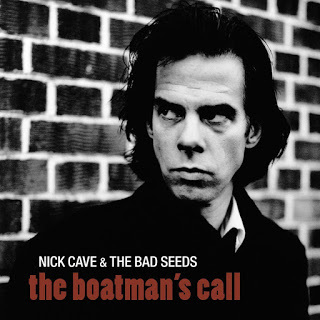
Early Years
Musician and writer Nick Cave was born in Warracknabeal, Australia, on September 22, 1957, to a librarian mother and an English-teacher father. Along with his two older brothers and younger sister, Cave was raised an Anglican, and the Bible has always been influential in his work (his first novel, And the Ass Saw the Angel, takes its name from a Bible verse). In high school in the mid-1970s, Cave met Mick Harvey, and the pair formed their first band, The Boys Next Door. The band's first record was a cover of "These Boots Are Made for Walking" (1978), and they followed it the next year with their first album, Door, Door. After high school, The Boys Next Door became The Birthday Party, and the band moved to London.
The Birthday Party represented an immediate change of pace from the prevailing '80s post-punk scene, with their blues-influenced, jangling rock. Their first LP, Prayers on Fire, was followed by Junkyard in 1982 and Mutiny, an EP, in 1983. That would be all The Birthday Party could muster by the time they disbanded in 1983.
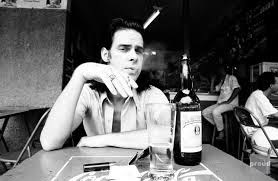
The Bad SeedsAfter the band's breakup, Cave headed to Los Angeles and put together his new band, Nick Cave and the Bad Seeds. Mick Harvey was one of the Bad Seeds, and a notable addition was Blixa Bargeld, of Einstürzende Neubauten, a legendary German industrial band that specialized in creating sheer walls of noise.
From Her To Eternity (1984) would be the new band's first album, and it was a more refined, if no less iconoclastic, sound than that of The Birthday Party. The band had moved from Los Angeles to Berlin, and there Cave began what would become And the Ass Saw the Angel, a novel that would draw critical acclaim and comparisons to the works of William Faulkner.
Cave also stayed busy with music, and the Bad Seeds released The Firstborn Is Dead in 1985 and Your Funeral…My Trialand Kicking Against the Pricks in 1986. In the late 1980s, Cave moved to Brazil to be with a woman he met on tour, Viviane Carneiro, and together they had a son. It was there that he finished his first novel. He also published King Ink (1988), a collection of lyrics, plays and prose.
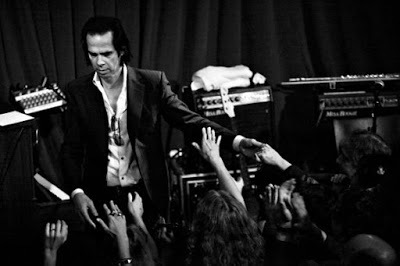
It was around this time Cave's songs took on a more ballad-like tone, beginning with 1990's The Good Son and running through Henry's Dream (1992) and the appropriately titled Murder Ballads (1996). Murder Balladswould prove to be an unlikely stepping stone into the realm of greater recognition for Cave and his bandmates, as appearances on the album by PJ Harvey (whom Cave dated), Shane MacGowan and Kylie Minogue brought in a wider audience.
Cave has remained with the Bad Seeds and has produced several more albums, from Let Love In (1994) to The Boatman's Call (1997) to No More Shall We Part (2001). He and a few members of the Bad Seeds formed Grinderman and released an eponymous album in 2007 and Dig, Lazarus, Dig!!! in 2008. Both albums found a rejuvenated Cave hitting new artistic heights and finding yet more critical success.
Cave has penned a few screenplays, among them the Australian western The Proposition(2005) and the American gangster movie Lawless, and has also scored several films. Nick Cave and the Bad Seeds returned in 2013 with Push the Sky Away, their 14th studio album.
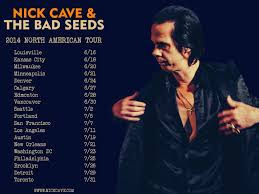
Personal Life
Cave dated singer-musician Anita Lane for several years and collaborated with her on a number of songs and musical projects, including a stint when she was a member of The Bad Seeds. Cave was also linked to singer PJ Harvey in the 1990s.
Nick Cave married model Susie Bick in 1999 and the couple have twin sons Arthur and Earl. Cave also has two children from previous relationships, a son Luke with ex-wife Viviane Carneiro, and a son Jethro with Beau Lazenby. Cave's son Arthur died in July 2015 at age 15 after falling from a cliff in Brighton, England. In a statement, the family said: "Our son Arthur died on Tuesday evening. He was our beautiful, happy loving boy."

Clancy's comment: A big name in Australia.
I'm ...

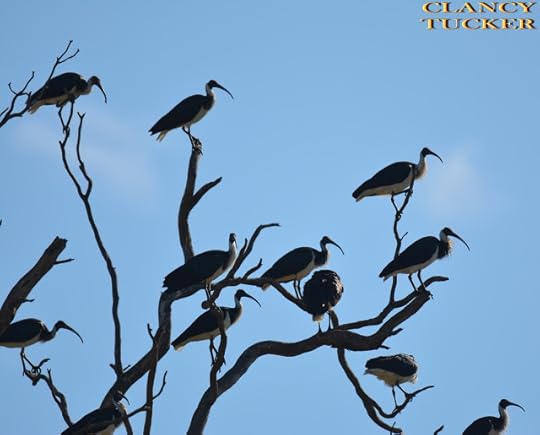
Published on July 31, 2017 14:27



